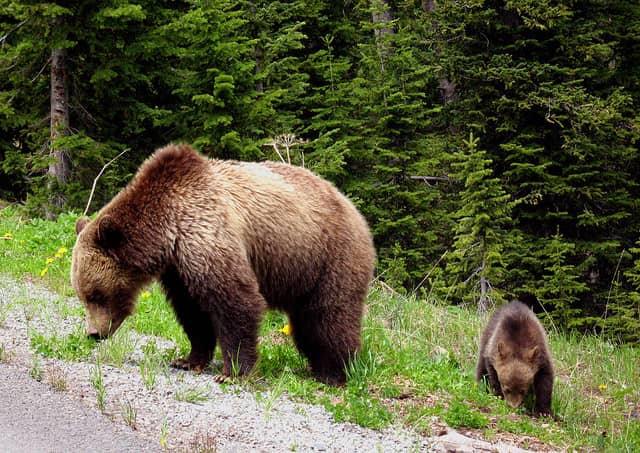Grizzly Bear That Killed 70 Sheep in Two Weeks Captured
OutdoorHub Reporters 06.25.12

Wildlife officials are calling it “an unprecedented killing spree.” A sow grizzly bear responsible for the death of at least 70 sheep near the Rocky Mountain Front in Montana was captured Sunday, June 24.
Over the past two weeks, three separate ranchers and farmers have reported varying numbers of dead sheep on their land. According to the U.S. Department of Agriculture’s Wildlife Services, the bear killed 58 animals at the Jones Family Ranch near Conrad; 47 lambs, five ewes, five big rams and one ram lamb. Fourteen miles away at another ranch, a farmer reported two ewes that were killed. Authorities also hold the bear responsible for the killing of 10 sheep at the New Miami Colony on June 10.
During the June 10 killing, officials were able to trap the sow’s young female cub, who is not deemed responsible for having killed any of the sheep. At that time, the sow escaped, but officials released the cub with a radio transmitter in its ear, hoping that it would help track the mother when the cub reunited with her.
Bear Management Specialist with Montana Fish, Wildlife and Parks Mike Madel said the two bears were tranquilized with a dart gun that was shot from a helicopter after officials spotted the pair on Muddy Creek near Collins. Officials are expected to meet later today to decide the sow’s fate and the bears are currently being held in Choteau.
As a part of bear management plans, bears are given a certain number of chances, said Madel. Although the sow is blamed for 70 sheep deaths on three different ranches, Madel clarified that she didn’t actually kill all 70.
Some she killed, while other died of injuries she inflicted, but a number of sheep were trampled as they tried to flee the bear.
While ranchers speculated that the bear was killing the sheep for fun, Madel said the bear is displaying a predatory instinct in killing the sheep and that she is not doing it for sport.
“She’s gotten this protein reward from domestic sheep so she’s looking for sheep,” he said to the Great Falls Tribune.
This killing spree could be attributed to the condition the two females were in at the time they were captured after killing the sheep at New Miami Colony. Both bears were emaciated at the time of capture. The 6-month-old cub weighed in at 32 pounds.
“Basically this is a female in poor shape,” Madel said to KTVQ. “She very possibly felt she could come back and feed on these carcasses at another time and so they’re killing what they have available for the opportunity to continue to feed.”
Aaron Jones of the Jones Family Ranch said he put up an electric fence after the first killing, when they found five dead rams were found Tuesday night. A snare was also set and the sheep were moved closer to the home. On Wednesday, the grizzlies returned and killed 53 more sheep. Jones found the carcasses across a 120-acre field. He estimates that he lost $15,000 total, although he may be repaid by Defenders of Wildlife, an organization that lobbies to protect wildlife (particularly predators).
Madel had caught and tagged the bear once before in 2010 when she was a cub. There was no record of her causing any harm and she hardly came down to private land or left the foothills west of Dupuyer. She dropped the collar as an adult. What is unique about her is that she is one of the youngest females known to have given birth to a cub. She was four and a half years old when her cub was born. Madel said most females have their first litter at five or six years old.
The bears’ fate is being decided today. They will either be relocated to a location closer to British Columbia with a radio collar on for the next three to four years or the sow will be put down and the cub relocated. Should the latter course of action be followed, the cub will be taken to a rehabilitation center before being placed in a zoo.

